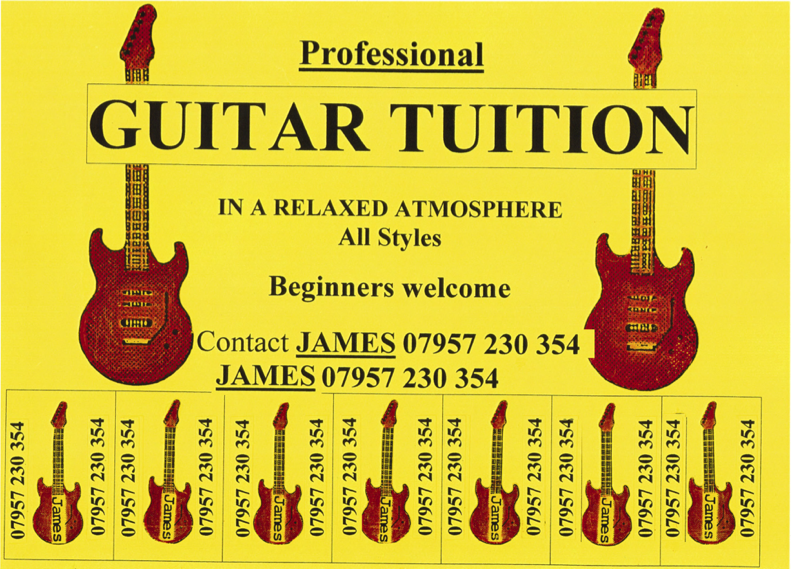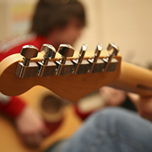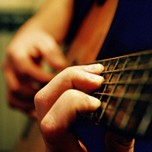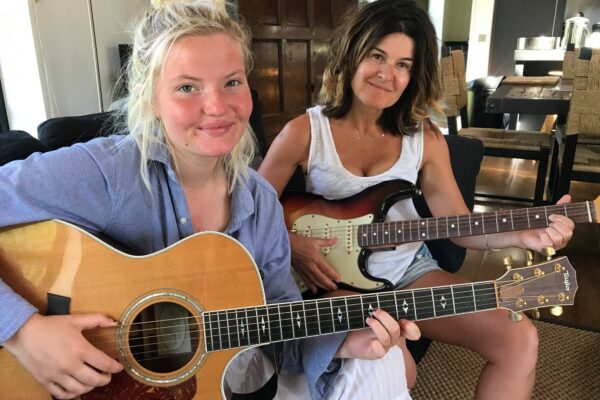
The Sound of One Guitar
The Sound of One Guitar: 10 Guitarists Who Shaped Music with Their Unique Sonic Fingerprints
By James Stratton | June 2025
In a world where thousands of guitarists churn out impeccable scales, perfect bends, and tone-chasing rig rundowns, it’s increasingly rare to find players whose very touch on the fretboard carves out a distinct and immediately recognisable sound. These 10 guitarists — spanning genres from rock and reggae to post-punk and ambient — have defied conventions, redefined their instruments, and built signature tones that fans can identify in mere seconds. This isn’t a list of the fastest or most technically flamboyant players, but of tone pioneers, sonic architects, and mood sculptors.
Search engine optimised and reader-savvy, this article explores the unique traits of guitarists like The Edge, Andy Summers, and more. Whether you’re Googling “guitarists with the most unique tone” or “players who sound like no one else,” this list is your definitive SEO-friendly deep dive into musical originality.
1. The Edge (U2) – The Sonic Cathedral Builder
David Howell Evans, better known as The Edge, turned delay, reverb, and modulation into a spiritual experience. Emerging in the late ’70s with U2, he embraced minimalism in an era of maximalist shredders. His clean, chime-like riffs (see “Where the Streets Have No Name”) are built on rhythmic delay patterns rather than traditional chords or scales.
What makes him unique:
-
Pioneered rhythmic delay layering (using units like the Electro-Harmonix Memory Man).
-
Avoids conventional soloing, instead focusing on textural atmosphere.
-
His tone embodies U2’s sonic identity: vast, emotive, and reverent.
2. Andy Summers (The Police) – Jazz-Infused Tension Master
Andy Summers’ style is angular, moody, and rich with suspended chords, chorus effects, and non-diatonic shapes. Drawing from his jazz background, Summers helped define The Police’s “reggae-rock noir” aesthetic.
Standout tracks: “Message in a Bottle,” “Walking on the Moon”
Why he’s irreplaceable:
-
Blends complex harmony into pop song structures.
-
Uses chorus and flanger pedals not for lushness, but for disorientation.
-
His voicings made three-piece arrangements feel cinematic.
3. Tom Morello (Rage Against the Machine / Audioslave) – The DJ with a Strat
If you ever heard scratching, helicopter sounds, or video game glitches — and it turned out to be a guitar, you were probably listening to Tom Morello. Armed with a Digitech Whammy and kill switch wizardry, he reimagined what a guitarist could be in a post-hip-hop world.
What makes him singular:
-
Uses feedback, toggle switches, and unconventional pick attacks.
-
Treats effects like instruments in themselves.
-
Tracks like “Bulls on Parade” and “Like a Stone” showcase both chaos and control.
4. Johnny Marr (The Smiths) – The Orchestral Riffsmith
In an age of guitar heroes, Johnny Marr became a guitar anti-hero, layering melodies instead of showing off solos. With The Smiths, he turned jangle-pop into an art form.
His hallmarks:
-
Arpeggiated chords, open tunings, and double-tracked parts.
-
Influenced by funk and Motown as much as British indie.
-
His Rickenbacker and Fender Jaguar sound created a new textural language.
5. Derek Trucks (Tedeschi Trucks Band / Allman Brothers Band) – The Slide Virtuoso
Derek Trucks channels raw emotion through a glass slide and a Gibson SG. Unlike many slide players who lean on clichés, Trucks infuses Indian ragas, Delta blues, and free jazz into his phrasing.
Why he stands alone:
-
Never uses a pick — only fingers and slide.
-
Seamlessly fuses sustain, microtonal movement, and soul.
-
His playing often evokes a human voice — pure vocal phrasing.
6. David Gilmour (Pink Floyd) – The Emotional Architect
David Gilmour doesn’t need speed. His note choice, phrasing, and tone can bring listeners to tears. From “Shine On You Crazy Diamond” to “Comfortably Numb,” Gilmour made emotion a technical skill.
Core features:
-
Strategic use of delay, reverb, and volume swells.
-
Inspired by blues but shaped by psychedelic space.
-
Every solo tells a narrative, almost cinematic in scope.
7. Adrian Belew (King Crimson / Talking Heads / David Bowie) – The Sonic Surrealist
Belew’s guitar often sounds broken, animalistic, or like an alien spacecraft. A pioneer of processed guitar in art rock, his work with King Crimson and Bowie redefined “weird” as visionary.
Key traits:
-
Heavy use of synth-style effects, tape loops, and feedback.
-
Mimics animal sounds and robotic textures.
-
Rarely plays traditional chords; more interested in emotional chaos.
8. Marc Ribot (Tom Waits / Ceramic Dog / John Zorn) – The Anarchist Improviser
Marc Ribot’s playing is both primitive and cerebral, unpredictable yet soulful. His work with Tom Waits introduced a “drunken blues” feel that’s become iconic.
What defines him:
-
Combines punk attitude with jazz phrasing.
-
Often uses cheap guitars and amps to achieve lo-fi magic.
-
His solos feel unhinged, yet profoundly intentional.
9. Nile Rodgers (Chic / Daft Punk / David Bowie) – The Groove Machine
Though best known as a rhythm player, Nile Rodgers’ right-hand technique and syncopated “chucking” created the foundation of disco, funk, and modern pop.
Signature moves:
-
Clean tone + compressed signal + funk rhythm = immortal riffs.
-
“Le Freak,” “Get Lucky,” “Let’s Dance” — each a masterclass in groove logic.
-
His Fender Strat “The Hitmaker” has more chart-toppers than most bands’ entire discographies.
10. Annie Clark (St. Vincent) – The Modern Art Rock Sculptor
Annie Clark fuses digital dissonance with baroque sophistication. Whether shredding glitchy lines on her Ernie Ball Music Man or deconstructing riffs into minimalist motifs, she redefines what it means to be a 21st-century guitarist.
What stands out:
-
Merges avant-garde composition with pop sensibility.
-
Uses custom-designed guitars to reflect ergonomic artistry.
-
Her tone is processed, yes, but never sterile — always intentional and feminist in voice.
Final Thoughts: What Does “Unique Sound” Even Mean?
While many guitarists learn scales, modes, and tone-shaping from the same sources, these ten players prove that the path to authenticity is through innovation, courage, and often, restraint.
In a digital age where plugins and presets abound, their stories are a reminder: true uniqueness lies in your ears, your hands, and your imagination. If you’re a guitarist searching for your own voice, study these sonic mavericks — not to copy them, but to learn how they found themselves.
How to Develop a Unique and Individual Guitar Sound: A Step-by-Step Guide
Whether you’re a bedroom guitarist, a gigging musician, or a content creator dreaming of viral recognition, the question remains the same: “How do I sound different?” In a world saturated with players chasing the same tones and presets, carving out your own unique guitar sound is a journey of self-discovery and creativity.
This guide breaks down practical, musical, and psychological steps to help you develop an authentic, individual voice on the guitar. Whether you’re into jazz, rock, blues, or experimental styles, these methods apply across genres — and they’re written with SEO-rich insights to help you stand out in the digital world too.
Why Having a Unique Guitar Sound Matters
If you type “famous guitarists with unique tone” into any search engine, names like The Edge, Tom Morello, and David Gilmour come up — not because they played the fastest or loudest, but because they sounded like nobody else.
A signature tone:
-
Sets you apart in a crowded field.
-
Builds emotional connection with listeners.
-
Helps you develop musical identity and confidence.
-
Is essential for branding on YouTube, Spotify, and social media.
1. Start by Identifying What Inspires You
Tip: Don’t copy—decode.
Make a list of your top five favourite guitarists. For each one, ask:
-
What tone grabs your ear? (e.g. warm, gritty, ambient, clean)
-
What technique is signature to their playing? (e.g. vibrato, slides, delay rhythms)
-
What gear or settings do they use?
-
What emotion does their sound evoke?
Example: Love John Frusciante? You might be drawn to dynamic contrast, chorus pedals, and clean strat sounds. Rather than imitating, isolate those elements and mix them with others.
2. Experiment with Unconventional Gear Settings
Great tones come from curiosity.
Instead of chasing presets on your amp or modeler, get lost in the knobs. Try:
-
Setting delay time too short or too long.
-
Using fuzz on a clean amp for texture.
-
Rolling off the tone knob to find darker, throatier sounds.
-
EQing your guitar, not just your amp.
And don’t underestimate low-cost gear. Some of the most original sounds come from “bad” pedals and budget guitars.
Pro tip: Keep a notebook or voice memo log of tones that catch your ear.
3. Use Playing Techniques That Define You
Technique shapes tone just as much as gear does. Try:
-
Fingerpicking instead of a plectrum.
-
Using slides, bends, harmonics, and muted percussive strums.
-
Hybrid picking for funky clarity.
-
Incorporating dynamics — soft and loud phrases within a solo.
Even something as subtle as your vibrato speed can set you apart. Jimi Hendrix and BB King didn’t sound alike, even though both used blues scales — it was all in the touch.







